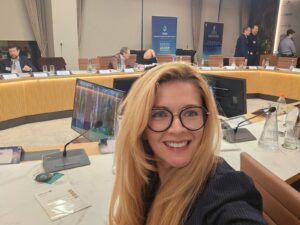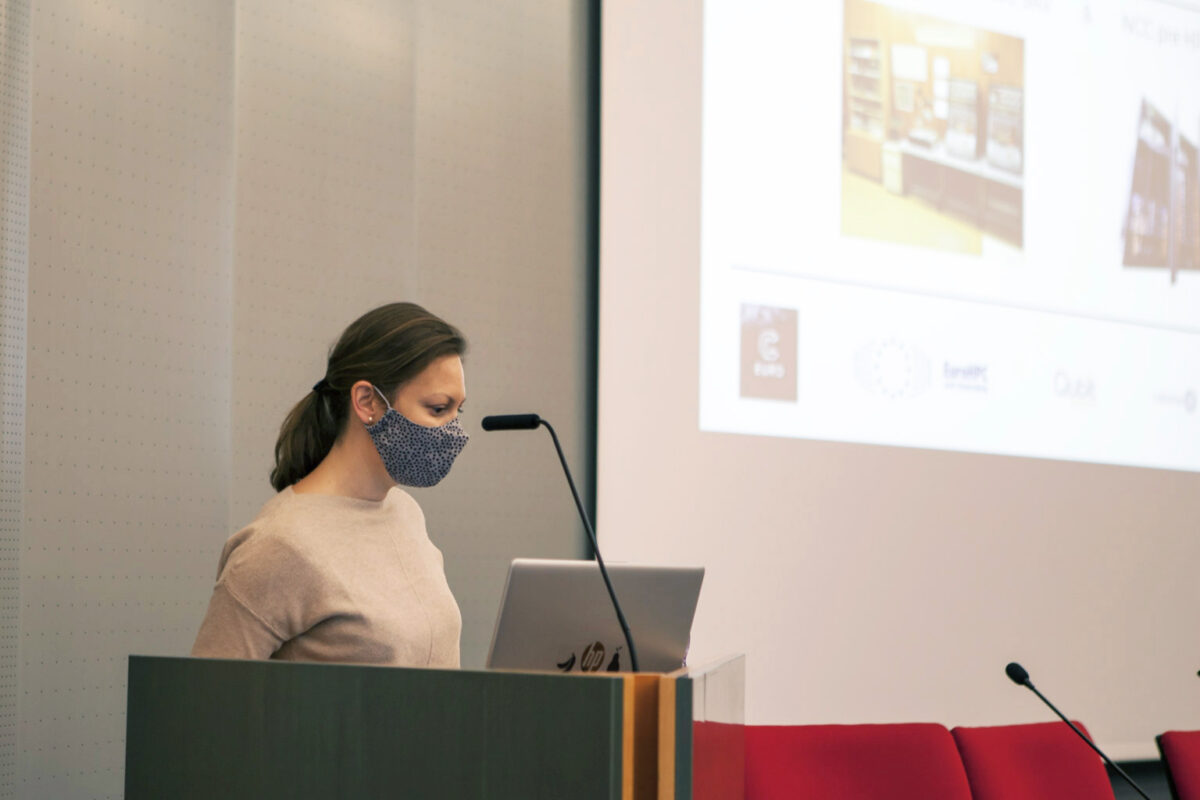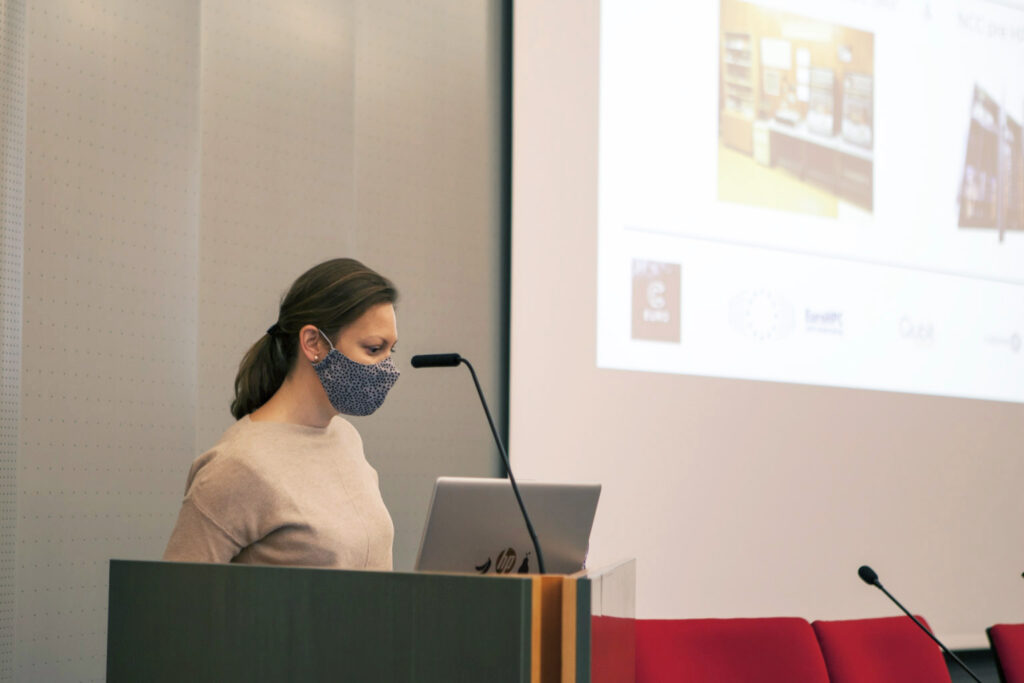Current trends and visions in HPC in Slovakia
On September 29, we started a series of lectures "Supercomputing in Science" in the lecture hall of the Slovak Academy of Sciences Popularization-educational lectures are a joint activity of the Computer Museum and the National Competence Center for HPC NCC, as the primary contact point for HPC in Slovakia, covers, among other things, educational and dissemination activities in this area.
Filip Holka, Head of the High-Performance Computing Department, and Lukáš Demovič, Director of COO SAS, took care of the introductory event Current trends and visions in HPC in Slovakia. In the first part, the participants learned how to define a supercomputer, on what technologies today's supercomputers are built, everything that must be taken into account in their design, as well as how to evaluate performance and energy efficiency. The second part of the lecture brought an interesting recapitulation of the history of HPC in Slovakia, but also a description of the current state and capacities in comparison with Europe and the surrounding countries. It is clear that Slovakia needs to invest in HPC infrastructure and support the digitization and use of innovative technologies, if it is to keep up with the rest of Europe. As Slovakia is a part of the European structures PRACE-RI and EuroHPC JU, we also touched on the benefits and opportunities that international cooperation brings to us and our users.
Last but not least, we also focused on initiatives that arose in Slovakia - specifically the National Supercomputing Center (NSCC), whose ambition is to develop HPC infrastructure and support high-performance computing in Slovakia.
The participants used the break with refreshments and coffee for informal conversations and discussions with the organizers and speakers.
You can watch the recording of the event on Facebook and YouTube and you can already register for our next lectures.
Schedule and Registration
- October 12, 17:00 - Computer simulations and calculations as an essential tool in science
Pavel Neogrády (Faculty of Natural Sciences, Comenius University)
- October 26, 17:00 - Development of technology and computer architecture – from 1-processor serial computers to supercomputers
Martin Šperka (Computer Museum, COO SAS)
- 10. novembra 2021 o 17:00 – Operation systems in multiprocessor clusters
Dušan Bernát (Faculty of mathematics, physics and informatics, Comenius University)
- November 23, 17:00 - Short guide to software parallelization
Jaroslav Suchánek (Biomedical Research Center, SAS)
- December 7, 17:00 - Federated distributed computing
Ladislav Hluchý (Institute of Informatics SAS)
- December 21, 17:00 - Modelling of 2D systems properties using the Quantum Monte Carlo methods
Ivan Štich (Institute of Physics SAS)
More information about the series
 Success story: AI Helps Save Women’s Lives 17 Dec - Strach z rakoviny prsníka je tichým spoločníkom mnohých žien. Stačí jedno pozvanie na preventívne vyšetrenie, jeden telefonát od lekára či jedno čakanie na výsledky – a myseľ je plná otázok: „Som v poriadku?“ „Čo ak nie?“ „Môže sa niečo prehliadnuť?“
Aj keď skríning potvrdí negatívny nález, obavy často pretrvávajú.
Success story: AI Helps Save Women’s Lives 17 Dec - Strach z rakoviny prsníka je tichým spoločníkom mnohých žien. Stačí jedno pozvanie na preventívne vyšetrenie, jeden telefonát od lekára či jedno čakanie na výsledky – a myseľ je plná otázok: „Som v poriadku?“ „Čo ak nie?“ „Môže sa niečo prehliadnuť?“
Aj keď skríning potvrdí negatívny nález, obavy často pretrvávajú. VICE and the Digital Twin at the Pre-Christmas Hydrogen Infoday 11 Dec - Dňa 10. decembra 2025 sme sa zúčastnili podujatia Predvianočný vodíkový Infoday v Bratislave. Súčasťou programu bola prezentácia VICE – Vertical Integrated Cyclic Energy, Hydrogen, vedená Laurie Farmerom a Luciou Malíčkovou.
VICE and the Digital Twin at the Pre-Christmas Hydrogen Infoday 11 Dec - Dňa 10. decembra 2025 sme sa zúčastnili podujatia Predvianočný vodíkový Infoday v Bratislave. Súčasťou programu bola prezentácia VICE – Vertical Integrated Cyclic Energy, Hydrogen, vedená Laurie Farmerom a Luciou Malíčkovou.  Strengthening Slovak–Romanian Cooperation and the Development of Scientific Partnership 8 Dec - Romania’s National Day is a significant historical milestone commemorating the Great Union of 1918, when Transylvania, Bessarabia, and Bukovina united with the Kingdom of Romania. This moment laid the foundations of the modern Romanian state and remains a powerful symbol of national identity and unity to this day.
Strengthening Slovak–Romanian Cooperation and the Development of Scientific Partnership 8 Dec - Romania’s National Day is a significant historical milestone commemorating the Great Union of 1918, when Transylvania, Bessarabia, and Bukovina united with the Kingdom of Romania. This moment laid the foundations of the modern Romanian state and remains a powerful symbol of national identity and unity to this day.

